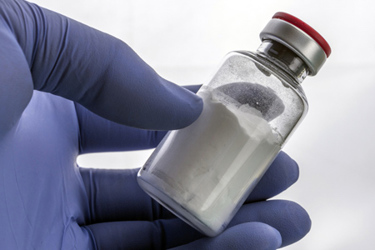Calculating The Right In-House/Outsource Mix For ADC Manufacturing
By Harch Ooi, Ph.D., Ooi CMC Consulting

Antibody-drug conjugate (ADC) manufacturing — and questions about whether to manufacture them in-house or with a partner — has gained increased visibility and interest as the field matures from a scientific curiosity to a modality that positively impacts the lives of cancer patients.
The first ADC to receive regulatory approval was Mylotarg (gemtuzumab ozogamcin) in 2000 for treatment of acute myeloid leukemia (AML). It was subsequently withdrawn in 2010 and reapproved in 2017. The next approval came in 2011 with Adcetris (brentuximab vedotin) gaining accelerated approval for treatment of relapsed refractory Hodgkin lymphoma (HL) and anaplastic large cell lymphoma (ALCL). Since then, the field has taken off, with fifteen ADCs being FDA approved as of July 2025, and hundreds more in clinical trials. Enhertu (fam-trastuzumab deruxtecan-nxki), which was initially approved in 2019 for HER2 positive breast cancer, has helped drive the interest, with impressive clinical outcomes allowing for label expansion.
ADCs are inherently complex in nature. They consist of a monoclonal antibody attached to a highly-potent payload via a linker. There are typically four distinct manufacturing activities:
- Antibody production
- Linker-payload production
- Conjugation
- Fill finish
With the increased interest in the field, a question innovator organizations face is whether to outsource manufacturing activities or perform manufacturing in-house. Below are some considerations that need to be taken into account:
Outsourcing Consideration |
Explanation |
| IP and know-how protection | Are your process and product IP-protected? Companies may choose to manufacture and/or perform analytical testing in-house because of an existential risk of losing their IP — and future profitability. |
| Manufacturing flexibility | Unexpected events such as unanticipated toxicity or changes in the competitive landscape might require reprioritization of programs, which is easier to manage for an internal facility. |
| Facility utilization | A careful cost-benefit analysis needs to be undertaken to ensure that the facility isn’t too idle. Not only does an idle facility result in high overhead costs, it is beneficial for the staff to remain familiar with the manufacturing processes. This requires reaching a critical mass of programs to be reached before this becomes feasible. |
| Internal vs. external expertise in analytical and process development and manufacturing | The multiple components that make up an ADC demand a high level of expertise across many areas. There represent financial, facility, personel and logistical challenges, which are often out of reach for smaller organizations. Outsourcing to one, or more likely several, CDMOs is often the most efficient way to leverage expertise and facilities quickly. |
The following is an overview of the ease of entry on the different manufacturing activities.
Antibody Production
The widespread adoption of single use manufacturing systems makes antibody production probably the easiest part of the process to internalize, as antibody production is a relatively mature process.
If you’re going to bring any step of the process in-house, the antibody could be your best candidate. It requires a relatively small footprint and standard equipment, and recruiting talent to oversee production is simpler for antibodies. Antibody manufacturing at scale should be within reach for nearly all ADC developers.
Linker-Payload Production
One of the biggest challenges with linker-payload production is that the final products are highly potent (OELs typically range from 1–100 ng/m3) and so rigorous procedural and engineering controls need to be put in place to ensure worker safety. Additionally, chromatographic purification is required, and the size and structural complexity tend to preclude crystallization of late stage intermediates as well as the final linker-payload.
Clinical batch scales are typically in the 10s to 100s of grams and can usually be made using portable reactors.
The highest risk activities are those that involve handling the dry linker-payloads. When in solution, the risks are lowered significantly. Ideally, a deactivating cleaning procedure should be developed, however, cleaning by dilution is also acceptable, especially in the earlier stages of development.
Safety of manufacturing staff must be paramount. If you want to bring this step in-house, your facility design must meet specific conditions. HVAC pressure cascade for the linker-payload is reversed compared to other unit operations; the manufacturing suite needs to be under negative pressure compared to the other areas.
Conjugation
The conjugation activity is where the bulk drug substance (BDS) is generated. As a starting point, all the considerations of handling biologics apply. Challenges encountered with conjugation often center around the dissolution of the highly potent linker-payload. One way of handling this is to use a disposable isolator system for the dissolution procedure.
It is worth noting that the final conjugate itself is a highly potent material, and the effluent solutions (whether they be from chromatographic purifications or from tangential flow filtrations/diafiltrations) will contain highly potent linker-payload, and therefore should be disposed of accordingly.
As with linker-payload manufacturing, developers have zero room for errors. Containment and procedures for highly-potent material must be robust at the risk of serious harm to staff.
Fill Finish
Most ADCs are lyophilized and reconstituted prior to administration to patients. Production of lyophilized drug-product requires a significant capital investment, even on a clinical scale.
Consider fill-finish only if you have the appetite for a big capital investment. Lyophilization is a well-established procedure, however, the additional challenge of working with ADCs is the potent nature of the compounds.
One strategy to streamline the manufacturing process of ADCs, whether performed internally or externally, is to pair two or more of the activities:
- Antibody manufacturing and conjugation
- Conjugation and fill finish
If both activities are conducted at the same site, minimization of shipping activities can be advantageous from a cost and timing perspective.
Conclusion
Overall, manufacturing of ADCs is complicated, and while there are advantages to performing internal manufacturing, the pros and cons should be carefully considered before undertaking that kind of activity.
About The Author:
 Harch Ooi, Ph.D., is a scientist and outsourcing expert who has over 17 years of experience in the ADC field. He’s the principal and founder of Ooi CMC Consulting in Zurich, Switzerland. Previously, he worked for Seagen, later Pfizer, as an external manufacturing director. He received his Ph.D. in organic chemistry from Monash University. He did postdoc work at the University of Florida.
Harch Ooi, Ph.D., is a scientist and outsourcing expert who has over 17 years of experience in the ADC field. He’s the principal and founder of Ooi CMC Consulting in Zurich, Switzerland. Previously, he worked for Seagen, later Pfizer, as an external manufacturing director. He received his Ph.D. in organic chemistry from Monash University. He did postdoc work at the University of Florida.
